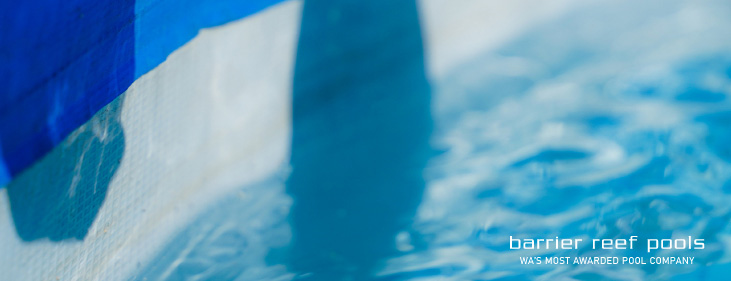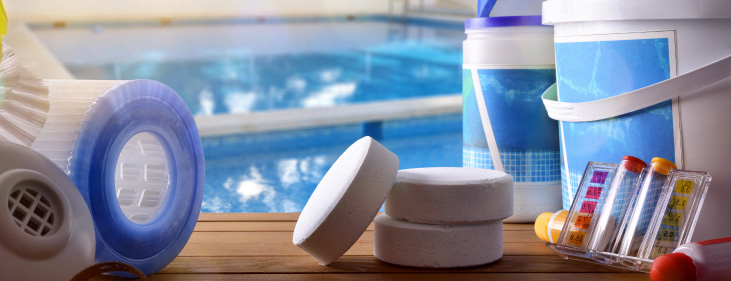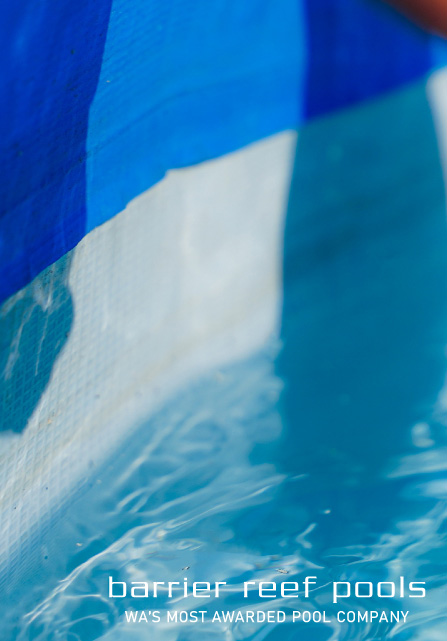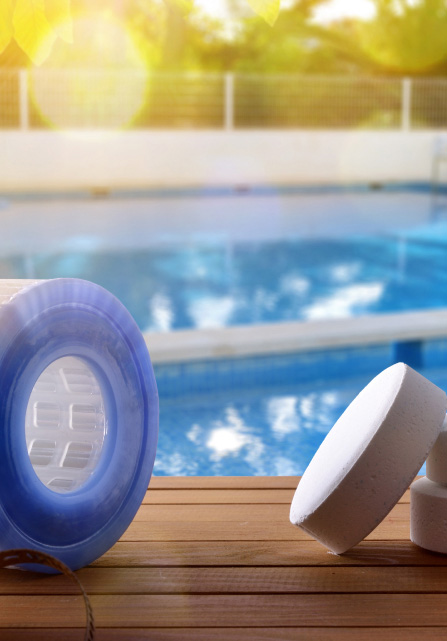A pool retaining wall is a structure that helps to keep soil and water in place around a swimming pool. It provides stability, reduces erosion, and adds an aesthetic touch to the pool area. In this article, we will discuss everything you need to know about pool retaining walls. Keep reading!

What is a Pool Retaining Wall?
A pool retaining wall is a wall built around the perimeter of a swimming pool to help keep soil, water, and other elements in place. It acts as a barrier, preventing soil and water from flowing into the pool and causing damage. Pool retaining walls can be made from a variety of materials, including concrete, stone, brick, and wood.
Why Do You Need a Pool Retaining Wall?
There are a few reasons why you might need a pool retaining wall, including:
- Preventing soil erosion – A retaining wall can help to keep soil and water in place, reducing the risk of erosion and maintaining the stability of the soil around your pool.
- Enhancing aesthetics – A well-designed pool retaining wall can add a touch of style and elegance to your pool area, improving the overall look of your backyard.
- Providing additional seating – Some pool retaining walls are designed with built-in seating, providing additional seating options for guests and family members.
- Adding safety features – A retaining wall can help to prevent children and pets from falling into the pool, providing an extra layer of safety for your family.
- Increased Property Value: A well-designed and well-maintained pool retaining wall can enhance the look of your property, potentially increasing its value.
Types of Materials Used for Pool Retaining Walls
There are different kinds of materials commonly used to build pool retaining walls, including:
- Concrete – Concrete is a popular choice for pool retaining walls due to its strength and durability. It is also relatively low-maintenance and can be painted or stained to match the surrounding area.
- Stone – Stone is another popular option for pool retaining walls, offering a natural and rustic look. Some popular types of stone used for pool retaining walls include limestone, sandstone, and granite.
- Brick – Brick is a traditional material often used for pool retaining walls. It provides a classic look and is relatively low maintenance.
- Wood – Wood is a more natural option for pool retaining walls, offering a warm and inviting look. However, wood is more susceptible to decay and weather damage than other materials, so it may require more maintenance over time.

Factors to Consider When Building a Pool Retaining Wall
When deciding to build a pool retaining wall, there are several factors to consider, including:
- Cost – The cost of a pool retaining wall can vary widely depending on the materials used, the size of the wall, and the complexity of the design.
- Maintenance – Some materials, such as wood, may require more maintenance than others, so it is important to consider the long-term maintenance costs when choosing a material.
- Design – The design of your pool retaining wall will play a significant role in determining its overall look and function. Consider the style of your home and backyard when selecting a design.
- Functionality – The wall should not only look good but also be functional and provide the necessary stability and erosion control.
How Much Does a Pool Retaining Wall Cost?
The cost of a pool retaining wall will vary depending on a number of factors, including the materials used, the size of the wall, and the complexity of the design. On average, a pool retaining wall can cost anywhere from $2,000 to $20,000 or more.
Maintenance and Upkeep of Pool Retaining Walls
Regular maintenance and upkeep are important to ensure that your pool retaining wall remains functional and visually appealing. This may include cleaning, painting or staining, and repairing any damage caused by weather or other elements. The specific maintenance required will depend on the materials used to build the wall.
Regular maintenance also helps prolong the lifespan of your pool retaining wall. Here are a few other tips that will help you do the same:
- Use Durable Materials: Choosing durable materials, such as concrete or stone, can help to ensure the longevity of your pool retaining wall.
- Proper Drainage: Ensuring proper drainage around your pool retaining wall can prevent water damage and help to prevent erosion.
- Avoid Overloading: Avoid placing too much weight on your pool retaining wall, as this can cause structural damage.
- Hire a Professional Contractor: Hiring a professional contractor with experience in building pool retaining walls can help to ensure that your wall is built correctly and will last for many years to come.

How to Choose the Right Contractor for Your Pool Retaining Wall Project
When choosing a contractor for your pool retaining wall project, it is important to consider their experience, reputation, and portfolio. You should also ask for references from previous clients and check the contractor’s insurance and licensing.
Before building a pool retaining wall, it is important to familiarise yourself with local building codes and regulations. These codes may dictate the materials used, the design of the wall, and the necessary permits and approvals. A reputable contractor should be able to help you navigate these regulations and ensure that your project meets all necessary requirements.
Creative Design Ideas for Pool Retaining Walls
- Use of Natural Stones: Natural stones such as granite, marble, or limestone can add a touch of elegance and sophistication to your pool retaining wall.
- Incorporating Planters: Incorporating planters into the design of your pool retaining wall can add greenery and beauty to your backyard.
- Combination of Materials: Mixing different materials, such as wood and stone, can create a unique and eye-catching design for your pool retaining wall.
- Integrating Lighting: Adding lighting to your pool retaining wall can enhance its aesthetic appeal and provide additional safety at night.
- Textured Surfaces: Adding texture to the surface of your pool retaining wall can add visual interest and make it stand out.
In Conclusion
A pool retaining wall is a valuable investment that can enhance the safety, functionality, and aesthetic appeal of your backyard. When considering building a pool retaining wall, it is important to consider the above-mentioned factors. With proper maintenance and upkeep, a pool retaining wall can provide years of enjoyment for you and your family. Whether you’re looking for a simple barrier or a creative design element, a pool retaining wall can be a great addition to your property.
A pool retaining wall is a structure that helps to keep soil and water in place around a swimming pool. It provides stability, reduces erosion, and adds an aesthetic touch to the pool area. In this article, we will discuss everything you need to know about pool retaining walls. Keep reading!

What is a Pool Retaining Wall?
A pool retaining wall is a wall built around the perimeter of a swimming pool to help keep soil, water, and other elements in place. It acts as a barrier, preventing soil and water from flowing into the pool and causing damage. Pool retaining walls can be made from a variety of materials, including concrete, stone, brick, and wood.
Why Do You Need a Pool Retaining Wall?
There are a few reasons why you might need a pool retaining wall, including:
- Preventing soil erosion – A retaining wall can help to keep soil and water in place, reducing the risk of erosion and maintaining the stability of the soil around your pool.
- Enhancing aesthetics – A well-designed pool retaining wall can add a touch of style and elegance to your pool area, improving the overall look of your backyard.
- Providing additional seating – Some pool retaining walls are designed with built-in seating, providing additional seating options for guests and family members.
- Adding safety features – A retaining wall can help to prevent children and pets from falling into the pool, providing an extra layer of safety for your family.
- Increased Property Value: A well-designed and well-maintained pool retaining wall can enhance the look of your property, potentially increasing its value.
Types of Materials Used for Pool Retaining Walls
There are different kinds of materials commonly used to build pool retaining walls, including:
- Concrete – Concrete is a popular choice for pool retaining walls due to its strength and durability. It is also relatively low-maintenance and can be painted or stained to match the surrounding area.
- Stone – Stone is another popular option for pool retaining walls, offering a natural and rustic look. Some popular types of stone used for pool retaining walls include limestone, sandstone, and granite.
- Brick – Brick is a traditional material often used for pool retaining walls. It provides a classic look and is relatively low maintenance.
- Wood – Wood is a more natural option for pool retaining walls, offering a warm and inviting look. However, wood is more susceptible to decay and weather damage than other materials, so it may require more maintenance over time.

Factors to Consider When Building a Pool Retaining Wall
When deciding to build a pool retaining wall, there are several factors to consider, including:
- Cost – The cost of a pool retaining wall can vary widely depending on the materials used, the size of the wall, and the complexity of the design.
- Maintenance – Some materials, such as wood, may require more maintenance than others, so it is important to consider the long-term maintenance costs when choosing a material.
- Design – The design of your pool retaining wall will play a significant role in determining its overall look and function. Consider the style of your home and backyard when selecting a design.
- Functionality – The wall should not only look good but also be functional and provide the necessary stability and erosion control.
How Much Does a Pool Retaining Wall Cost?
The cost of a pool retaining wall will vary depending on a number of factors, including the materials used, the size of the wall, and the complexity of the design. On average, a pool retaining wall can cost anywhere from $2,000 to $20,000 or more.
Maintenance and Upkeep of Pool Retaining Walls
Regular maintenance and upkeep are important to ensure that your pool retaining wall remains functional and visually appealing. This may include cleaning, painting or staining, and repairing any damage caused by weather or other elements. The specific maintenance required will depend on the materials used to build the wall.
Regular maintenance also helps prolong the lifespan of your pool retaining wall. Here are a few other tips that will help you do the same:
- Use Durable Materials: Choosing durable materials, such as concrete or stone, can help to ensure the longevity of your pool retaining wall.
- Proper Drainage: Ensuring proper drainage around your pool retaining wall can prevent water damage and help to prevent erosion.
- Avoid Overloading: Avoid placing too much weight on your pool retaining wall, as this can cause structural damage.
- Hire a Professional Contractor: Hiring a professional contractor with experience in building pool retaining walls can help to ensure that your wall is built correctly and will last for many years to come.

How to Choose the Right Contractor for Your Pool Retaining Wall Project
When choosing a contractor for your pool retaining wall project, it is important to consider their experience, reputation, and portfolio. You should also ask for references from previous clients and check the contractor’s insurance and licensing.
Before building a pool retaining wall, it is important to familiarise yourself with local building codes and regulations. These codes may dictate the materials used, the design of the wall, and the necessary permits and approvals. A reputable contractor should be able to help you navigate these regulations and ensure that your project meets all necessary requirements.
Creative Design Ideas for Pool Retaining Walls
- Use of Natural Stones: Natural stones such as granite, marble, or limestone can add a touch of elegance and sophistication to your pool retaining wall.
- Incorporating Planters: Incorporating planters into the design of your pool retaining wall can add greenery and beauty to your backyard.
- Combination of Materials: Mixing different materials, such as wood and stone, can create a unique and eye-catching design for your pool retaining wall.
- Integrating Lighting: Adding lighting to your pool retaining wall can enhance its aesthetic appeal and provide additional safety at night.
- Textured Surfaces: Adding texture to the surface of your pool retaining wall can add visual interest and make it stand out.
In Conclusion
A pool retaining wall is a valuable investment that can enhance the safety, functionality, and aesthetic appeal of your backyard. When considering building a pool retaining wall, it is important to consider the above-mentioned factors. With proper maintenance and upkeep, a pool retaining wall can provide years of enjoyment for you and your family. Whether you’re looking for a simple barrier or a creative design element, a pool retaining wall can be a great addition to your property.




